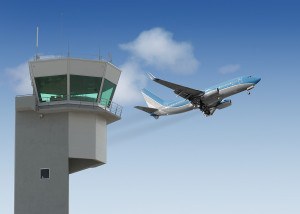Municipal airports, as well as the authorities and fix-base operators that manage many of their activities, must navigate a wide range of potential liability exposures related to the safety and security of passengers, aircraft, materials and equipment on their premises. A new report from Assurex Global, a privately held global commercial insurance, risk management and employee benefits brokerage group, describes several unique risks for airports and the specialized insurance coverages that can address them.
 “While the nearly 16,000 airports across the U.S. and Canada are widely diverse in terms of their operations, scale and type of aircraft using them, they all face a number of unique exposures related to their business,” said Belinda Bryce, partner and executive vice president of the Aviation Division at The Magnes Group Inc., an Assurex Global partner firm. “Besides risks faced by most enterprises – including natural disasters, employment issues, crime, terrorism, environmental and business interruption – airports must assess exposures specific to their operations and find the best ways to address them.”
“While the nearly 16,000 airports across the U.S. and Canada are widely diverse in terms of their operations, scale and type of aircraft using them, they all face a number of unique exposures related to their business,” said Belinda Bryce, partner and executive vice president of the Aviation Division at The Magnes Group Inc., an Assurex Global partner firm. “Besides risks faced by most enterprises – including natural disasters, employment issues, crime, terrorism, environmental and business interruption – airports must assess exposures specific to their operations and find the best ways to address them.”
The Assurex Global report discusses a number of airport-specific liability risks that may be excluded from standard commercial liability insurance and thus need addressed by coverages available under specialized aviation general liability (AGL) insurance policies. The coverages include:
- Premises liability – Whenever individuals are injured on airport property, the airport may be liable. This coverage, which forms the basis of an aviation general liability policy, provides protection against the financial consequences of such occurrences.
- Hangarkeeper’s liability – Airports may be liable for damage to aircraft or equipment owned or leased by others that are stored or maintained in airport hangars. This coverage addresses these risks and is typically available as option within the AGL policy.
- Products and completed operations liability – Airports may be at risk for injuries or property damage resulting from the use, handling, or consumption of a product sold by the airport. An example might be an aircraft that crashes after refueling at airport-operated gas pumps. This coverage is designed to protect the airport from negligent work or sale and/or distribution of a faulty product.
- Personal and advertising injury liability – This coverage addresses potential risks from claims brought by individuals against the airport for activities that give rise to such issues as false arrest, malicious prosecution, wrongful eviction, libel, slander, privacy violations, and copyright infringement.
- Contractual liability – Airports typically contract with numerous suppliers, providers, maintenance firms, and tenants that, in turn, may seek to transfer some of their risk to the airport through indemnity, hold-harmless agreements, or similar clauses. While this coverage can help address these risks, there may be restrictions. Thus, airports should advise insurers of any contracts on a timely basis.
“Even though aviation general liability insurance can help airports address a number of their unique liability exposures, they comprise only one element of an airport’s overall risk management program,” said Bryce. “Airport executives should be sure to focus on all aspects of the airport’s risk and review their insurance with a knowledgeable risk professional experienced in serving the aviation sector.”
Source: Assurex Global
Was this article valuable?
Here are more articles you may enjoy.

 Jump Trading Faces $4 Billion Terraform Administrator Suit
Jump Trading Faces $4 Billion Terraform Administrator Suit  Apollo Expands Asset-Level Risk Reviews to Reflect Impact of Extreme Weather
Apollo Expands Asset-Level Risk Reviews to Reflect Impact of Extreme Weather  J&J Talc Jury Awards $1.56 Billion to Asbestos Cancer Victim
J&J Talc Jury Awards $1.56 Billion to Asbestos Cancer Victim  Cat Bonds Linked to Wildfires Lose ‘Once Untouchable’ Status
Cat Bonds Linked to Wildfires Lose ‘Once Untouchable’ Status 